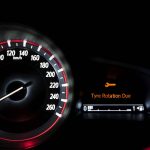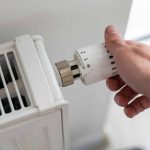Preparing your vehicle for the UK’s MOT emissions test can be daunting, but it doesn’t have to be. With the right knowledge and proactive maintenance, you can ensure compliance and avoid unnecessary stress. Explore essential tips that will not only help your vehicle pass the emissions test but also enhance its overall performance. From checking maintenance logs to understanding key components affecting emissions, this guide equips you with practical solutions for your vehicle’s optimal health. Make the most of your MOT preparation!
Understanding the MOT Emission Test
The MOT emission test is a critical component of vehicle compliance with UK regulations. It ensures that vehicles meet specific environmental standards by checking the levels of pollutants emitted. This test is essential not only for maintaining air quality but also for ensuring the safety and efficiency of vehicles on the road.
Additional reading : What are the criteria for a vehicle to qualify as a ‘classic car’ in the UK?
Overview of the MOT Emission Test Requirements
Vehicles in the UK must undergo this test annually. During the test, technicians measure the exhaust emissions to ensure they fall within the permissible limits set by the government. These limits vary depending on the vehicle's age and type, reflecting the evolving standards for cleaner air.
Importance of the Emission Test
The emission test plays a vital role in safeguarding environmental standards. By limiting the pollutants vehicles emit, it helps reduce air pollution, contributing to better public health and a cleaner environment. Furthermore, passing the test is crucial for vehicle owners to remain compliant with legal requirements.
Also read : What are the tax benefits of owning a zero-emission vehicle in the UK?
Consequences of Failing the Emission Test
Failing the MOT emission test can lead to significant consequences. Vehicles that do not meet the required standards must be repaired and retested. Failure to comply can result in fines and the inability to legally drive the vehicle, emphasizing the importance of regular maintenance and compliance.
Key Pre-Test Vehicle Checks
Before undertaking the MOT emission test, conducting thorough pre-test checks is essential. This proactive approach can save time and prevent unexpected failures.
Inspecting the Exhaust System
A crucial step in vehicle maintenance is examining the exhaust system for any leaks or damage. A compromised exhaust can lead to increased emissions and test failure. Look for signs of rust, holes, or loose connections. Addressing these issues promptly ensures the system operates efficiently, reducing harmful emissions.
Checking Engine Oil Levels and Quality
Engine oil plays a significant role in maintaining vehicle performance. Before the test, verify that the engine oil levels are adequate and the oil quality is optimal. Dirty or low oil can affect engine efficiency, potentially leading to increased emissions. Regular oil changes help maintain the engine's health and improve emission outcomes.
Ensuring Proper Functioning of the Catalytic Converter
The catalytic converter is vital for reducing vehicle emissions. Ensure it functions correctly by listening for unusual noises or checking for any warning lights on the dashboard. A malfunctioning converter can significantly impact emissions, leading to test failure. Regular inspection and maintenance of the catalytic converter help keep emissions within legal limits.
Common Emissions-Related Issues
Understanding and identifying emissions problems is crucial for maintaining optimal vehicle performance. Several components can contribute to elevated emissions, and troubleshooting these issues can prevent test failures.
Identifying Common Causes of High Emissions
High emissions often stem from a few typical issues. Faulty fuel injectors can lead to inefficient fuel combustion, increasing emissions. Regular checks can ensure injectors are functioning correctly. Dirty or clogged air filters restrict airflow, causing the engine to burn more fuel and release more pollutants. Replacing air filters regularly can help maintain proper air-fuel balance.
Diagnosing Issues with Fuel Injectors and Air Filters
Fuel injectors and air filters play pivotal roles in the emission system. Malfunctioning injectors can cause uneven fuel distribution, leading to excessive emissions. Similarly, compromised air filters reduce engine efficiency. Diagnosing these components involves checking for clogs or leaks and ensuring they are clean and well-maintained to support efficient combustion.
Understanding the Impact of Worn Spark Plugs on Emissions
Worn spark plugs can significantly affect emissions by causing incomplete combustion. This results in higher levels of unburned fuel in the exhaust. Regularly inspecting and replacing spark plugs ensures they ignite the fuel-air mixture efficiently, reducing emissions and enhancing vehicle performance.
Effective Maintenance Techniques
Ensuring effective vehicle maintenance is essential for achieving optimal emissions reduction and enhancing overall vehicle performance. Regular servicing plays a pivotal role in emissions control by addressing potential issues before they escalate. Routine checks can identify and rectify problems such as faulty components, which may lead to increased emissions if left unattended.
Recommended Maintenance Practices for Optimal Performance
Preventative care involves several key practices that contribute to efficient emissions management. Regularly replacing worn parts, such as spark plugs and air filters, helps maintain an optimal air-fuel mixture, ensuring efficient combustion. Additionally, inspecting the exhaust system for leaks or damage can prevent unnecessary emissions and maintain vehicle integrity.
Importance of Using Quality Fuel and Additives
The choice of fuel and additives significantly impacts a vehicle's emissions profile. Using high-quality fuel can improve engine performance and reduce harmful emissions. Fuel additives, designed to clean and protect the engine, can further enhance combustion efficiency. These additives help remove deposits from fuel injectors and other components, promoting smoother operation and reduced emissions.
By incorporating these maintenance techniques, vehicle owners can effectively manage emissions, ensuring compliance with environmental standards and prolonging the lifespan of their vehicles.
Preparation Timelines for the MOT Test
Proper MOT preparation is crucial for passing the test and ensuring vehicle compliance. Establishing a clear maintenance timeline helps avoid last-minute surprises and ensures all components are in optimal condition.
Suggested Timeline for Vehicle Checks
Begin your preparation about a month before the scheduled test. This allows ample time to address any issues that may arise. Start with an overall inspection of the vehicle's key systems, focusing on emissions-related components like the exhaust and catalytic converter. Early detection of problems gives you the opportunity to make necessary repairs or replacements without the pressure of a tight deadline.
Importance of Scheduling Service Appointments in Advance
Booking service appointments well ahead of the MOT test is essential. This ensures that your vehicle receives professional attention, with mechanics having adequate time to perform thorough checks and maintenance. Early scheduling also helps avoid the rush of last-minute bookings, which can lead to insufficient preparation.
Last-Minute Checks to Ensure Readiness
In the days leading up to the test, conduct final checks to confirm all systems are functioning correctly. Verify that fluid levels are adequate, lights are operational, and tyres are in good condition. These last-minute checks can prevent simple oversights from becoming costly failures during the test.
Additional Resources and Tools
To enhance your vehicle preparation for the MOT emission test, leveraging the right MOT resources and tools is crucial. These can simplify the process and ensure your vehicle meets the required standards.
Recommended Checklists for Vehicle Preparation
Utilising a comprehensive maintenance checklist can streamline your pre-test routine. Such checklists typically include inspecting the exhaust system, checking engine oil levels, and ensuring the catalytic converter functions properly. Having a structured approach helps in addressing potential issues systematically, reducing the risk of test failures.
Useful Tools for DIY Vehicle Maintenance
Investing in quality vehicle preparation tools can empower you to perform effective DIY maintenance. Essential tools might include a digital tyre pressure gauge, an oil dipstick, and a basic socket set. These tools can help you conduct preliminary checks and minor repairs, ensuring your vehicle remains in top condition.
Resources for Finding Local Mechanics and MOT Testing Centres
When professional help is needed, accessing reliable MOT resources is vital. Online platforms and local directories can provide information on trusted mechanics and MOT testing centres in your area. This ensures you receive expert assistance, enhancing your vehicle's readiness for the emission test.
















